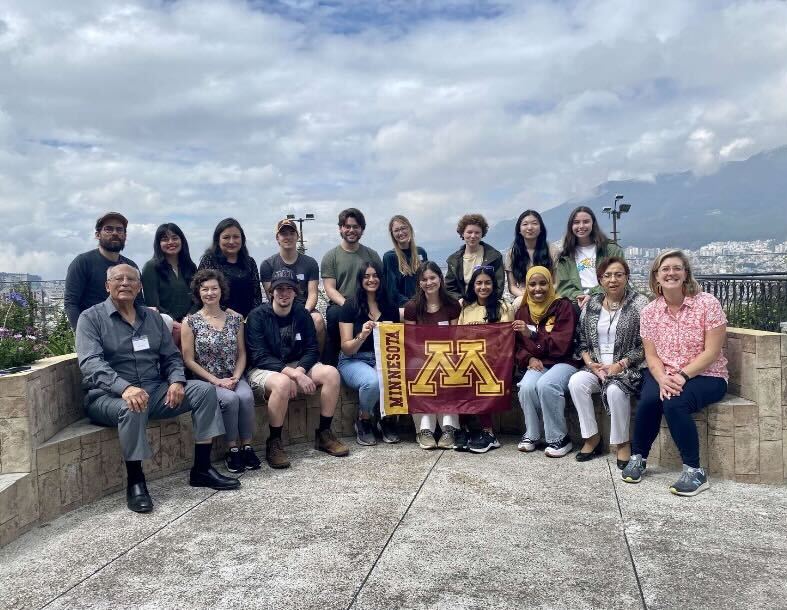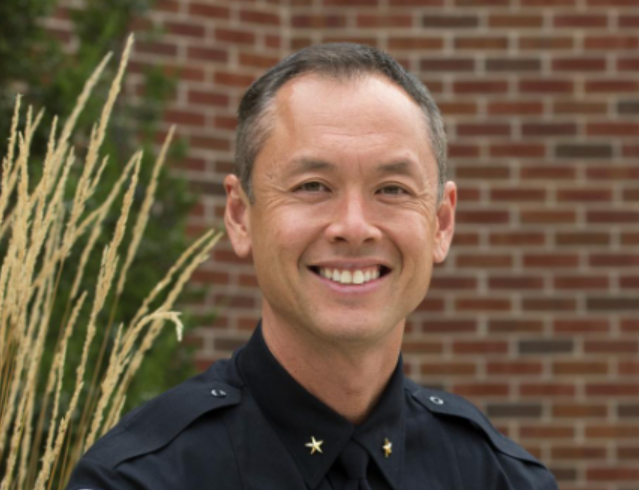Eleven students from the “AHS 3004: Health in the Andes” course traveled to Ecuador over spring break as part of their health-centered curriculum to learn about how health issues, such as poverty and clinical health care, affect different cultures.
The course is an embedded course, a type of study abroad program where students meet on campus for seven weeks to learn class content, then travel to the country of study for a week to implement what they learned. When they return to campus, they have the opportunity to process their experience and work on final projects.
Embedded course model provides unique way to study abroad
The Learning Abroad Center on campus provides a variety of embedded programs for students of all majors.
“We work with a local travel agent and build a group flight so everyone can travel together with their professor,” Lindsey Lahr, assistant director of the Learning Abroad Center, said.
Students in these programs have to pay a program fee to cover the costs of going abroad. Tuition is billed the same way as a typical on-campus degree program, with the expectation of students taking a full-time courseload over a semester, according to Lahr.
Students receive credit for these courses for the semester, as in a typical on-campus degree program, Lahr said.
The embedded course model provided opportunities for students who could not commit to a semester-long or extended program to study abroad. Lahr said some students are unable to commit to a semester-long or extended program due to their jobs or family commitments.
“Students can still get that study abroad experience while also working toward their degree or making money or family commitments,” Lahr said. “This embedded model is becoming more popular because pedagogically, it is nice for students to have the class time and the abroad component.”
The Learning Abroad Center works with different organizations in different countries, helping students and professors once they arrive in a country. Fundación CIMAS de Ecuador is the Ecuador-based organization that hosted the AHS class and helped the class visit various clinics in the country.
“We met with the staff and physicians and other health care professionals to learn about how they integrate Indigenous health practices alongside modern clinical care,” Laura Fyfe, co-instructor of AHS 3004, said.
Instructors and students reflect on the experience
Rahma Ali, a second-year biology, society and environment major, is a student in the class. She said going to Ecuador made her feel like she was back in her home country of Somalia because of the country’s strong emphasis on community.
“They are very welcoming, they welcome you to their environments, their homes, their restaurants, and even though a majority of us didn’t speak Spanish really well, we were still able to understand and communicate,” Ali said.
Ali said learning about Ecuador and its health care system before the trip allowed the class to quickly make observations about their learning without having to ask too many basic questions.
“We went to a lot of different hospitals and we needed to understand everything we heard so we could bring back that information for our class and for our final project,” Ali said.
Students were separated into groups and tasked with making observations that fit with a cross-cultural sustainable development goal, such as hunger or poverty in Ecuador compared to Minnesota, according to Fyfe.
“We’re all at different stages in our ability to relate with different cultures and to understand our own culture,” Dana Lovold, co-instructor of the class, said. “We try to facilitate that process while we’re abroad because we find that it’s really critical to getting a lot of meaning from the experience.”
Emphasizing the importance of learning about other cultures
Lovold wanted students to make connections between their own life experiences and their learning in the class from a health and cultural perspective.
“By throwing culture into the mix, we can start to understand how that is essential to addressing some of these complex and emergent health issues that were faced not only in Minnesota but globally,” Lovold said.
For Ali, the biggest takeaway from participating in the embedded course model is being flexible with scheduling and not having expectations about what the cultural experience should look like.
“When the instructors shared that it’s important to go in with an open perspective, I really took that seriously because this is a country I haven’t been to and a culture I haven’t learned much about,” Ali said. “With expectations [of what the experience would look like], I don’t think I would’ve had the same experience.”














